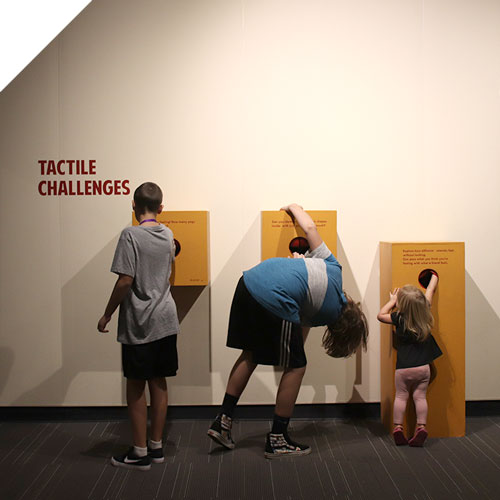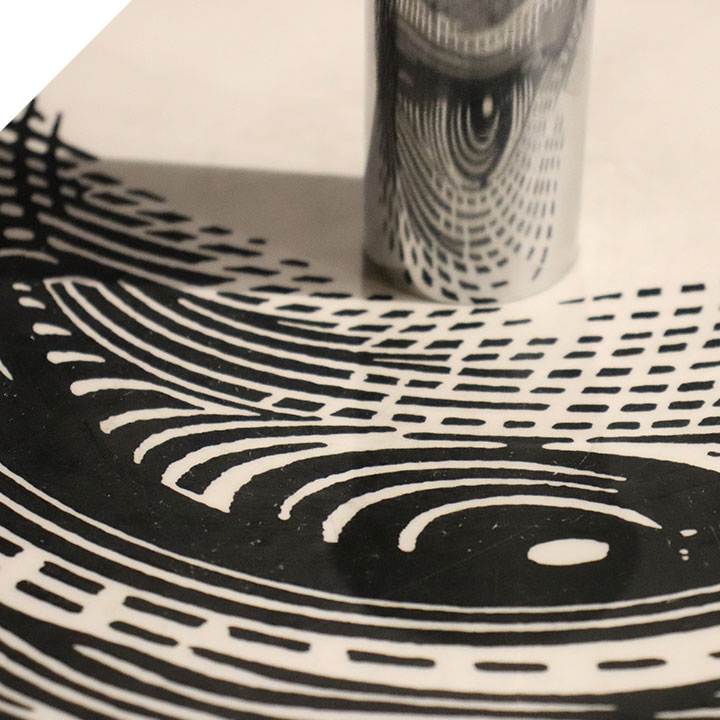This exhibit is closed due to COVID 19
Perception Exhibit Overview
Your mind is astonishing! And so is our newest exhibit. Your mind constructs your experience by distorting, adding and even leaving things out. By focusing on three senses—touch, hearing and sight—Perception explores how your mind manipulates sensory data to shape your view of the world. Each visit will give you a new appreciation for that wonderful, mysterious organ, the human brain.
Perception Exhibit Highlights
Through The Looking Glass
The science of perception is also an art in this gallery called Through The Looking Glass. Curator Alexandra Karl PhD has partnered with The Leonardo to showcase Utah artists who all work within distortion and skewed perspectives. Visit Through The Looking Glass in the Perception exhibit this summer.


Tactile Exploration
Challenge your sense of touch with the tactile boxes in Perception. Each challenge will prompt you to use this sense as a way to identify shapes and textures as well as perceive size and number of objects. Your skin is the largest organ of the body and a landscape of feeling. The amount of information your brain receives from touch is vast. Different types of touch signal reactions in the brain that can inform trust, convey sympathy, release the feel-good neurochemical oxytocin and much more. Explore your brains ability to process sensory data.


Optical Illusions
Experience the way a cognitive illusion distorts your assumptions of an element and its environment. The human eye’s instinctive reactions to contrast combined with certain patterns can result in the illusion of motion in still images, create misconceptions of scale or perceive non-existent subjects. Additionally, the same concepts can be experienced in color in the area of illusions created by artist and professor of psychology, Akiyoshi Kitaoka. Visit the Anamorphosis activity table to see how else illusion is implemented as an art. The activity uses a metallic cylinder as a tool to undistort an image and reflect a subject that may be hidden in the artwork.
The Leonardo da Vinci Connection
The human brain was elusive and fascinating to Leonardo da Vinci. His medical illustrations demonstrated advanced understandings for his time and they included segmentations of the brain and its’ peripherals. Da Vinci performed dissections and documented his observations of the anatomy of the eye and its’ connections to the brain. He eventually created a cast of the ventricles of an ox brain thus furthering the study of neurophysiology.

